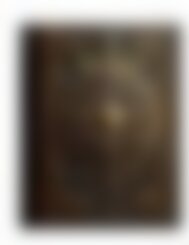Message In The Stars
The Hebrew word Mazzaroth simply refers to the same concept to which the Greek term refers to the Zodiac. I got this study from "Berean Insights'." Berean Insights' purpose is to provide training and resources to help you go deeper in your study and understanding of the Bible. Berean Insights is a registered charitable trust in New Zealand, founded by Ian and Tania Vail of Wycliffe Bible Translators.
The Hebrew word Mazzaroth simply refers to the same concept to which the Greek term refers to the Zodiac. I got this study from "Berean Insights'."
Berean Insights' purpose is to provide training and resources to help you go deeper in your study and understanding of the Bible.
Berean Insights is a registered charitable trust in New Zealand, founded by Ian and Tania Vail of Wycliffe Bible Translators.
You also want an ePaper? Increase the reach of your titles
YUMPU automatically turns print PDFs into web optimized ePapers that Google loves.
7<br />
<strong>The</strong> brightest star in the constellation of Virgo is Tsemech (Hebrew) which means<br />
Branch, in Arabic this word is Al Zimach meaning the same thing. One star in the<br />
constellation of Virgo is called Zavijaveh meaning “gloriously beautiful”:- the one who is<br />
referred to in Isaiah 4:2 as “the Branch of the LORD will be beautiful and glorious”.<br />
Other stars in the constellation are Al Mureddan which means “who shall come down” or<br />
“who shall have dominion”. <strong>In</strong> Chaldean this star was called Vindemiatrix, meaning “the<br />
Branch shall come down”.<br />
One Decan associated with Virgo is Coma – “<strong>The</strong> Desired Son”. <strong>In</strong> Egyptian it was<br />
called Shesnu also meaning the ‘desired son”. Shakespeare referred to this in his play<br />
Titus Andronicus, Act iv Scene iii with the words “the good boy in Virgo’s lap”. Who is<br />
the good boy in Virgo’s lap, none other than the Branch, the coming Messiah of God.<br />
Coma is one of three associated constellations of Virgo. <strong>The</strong> Arabian astronomer<br />
Albamazer in AD 805 referred to the son in Virgo as having the name Ihesu. “<strong>The</strong>re<br />
arises in the first decan, as the Persians, Chaldeans and Egyptians, the two Hermes and<br />
Ascalius teach – a young woman whose Persian name translated into Arabic is<br />
Adrenedefa, a pure and immaculate virgin … sitting on a throne nourishing an infant<br />
who has a Hebrew name, by some nations called Ihesu, with the signification Ieza, which<br />
in Greek is called Christ.” From a Christian point of view, it is clear that we are talking<br />
about Christ the Messiah. Barbanel, a Jew living in Medieval times claimed a bright star<br />
was to have appeared in the heavens two years before the Messiah’s birth. It was this<br />
star which prompted the Magi to begin their journey. At midnight in the middle of<br />
September 5 B.C. the constellation was on the meridian above Bethlehem. A year later a<br />
bright star would have appeared over the head of Coma in the constellation of Virgo<br />
and its associated decans. That star would have been bright enough to have been seen<br />
all day and would have been visible for 30 years, i.e. throughout Jesus lifetime (read<br />
“time on earth”; He is still alive!).







